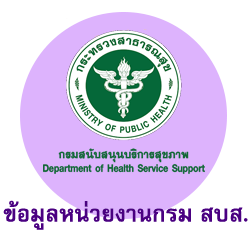การระบาดของ Klebseilla pneumonia ที่ดื้อต่อยาหลายขนานในโรงพยาบาลบึงกาฬ จังหวัดบึงกาฬ ในปี พ.ศ.2559-2562
คำสำคัญ:
การระบาด, Klebseilla pneumoniae, Multiidrug resistant bacteria, MDR, CREบทคัดย่อ
ในการติดเชื้อดื้อยาในโรงพยาบาลบึงกาฬ เชื้อก่อโรคที่สำคัญคือ Klebseilla pneumoniae MDR การวิจัยศึกษาระบาดวิทยาเชิงพรรณนาย้อนหลังครั้งนี้ มีวัตถุประสงค์เพื่อศึกษาการระบาดของเชื้อ klebsiella pneumonia MDR, ศึกษาลักษณะทางระบาดวิทยาเชิงพรรณนาของการระบาด ค้นหาแหล่งที่พบเชื้อและศึกษาแนวโน้มของการดื้อต่อยาหลายชนิดของเชื้อ Klebsiella pneumonia ที่จำแนกตามชนิดของสิ่งส่งตรวจและหอผู้ป่วยแยกได้จากผู้ป่วยในโรงพยาบาลบึงกาฬ จังหวัดบึงกาฬ จำนวน 942 ตัวอย่างโดยการศึกษานี้เก็บรวบรวมข้อมูลโดยโปรแกรมบันทึกข้อมูลทางงานจุลชีววิทยาคลินิก ระหว่างวันที่ 1 มกราคม 2559-31 ธันวาคม 2562 วิเคราะห์ข้อมูลโดยใช้สถิติเชิงพรรณา การแจกแจง ความถี่และร้อยละ
ผลการศึกษาพบว่ามีการระบาดของเชื้อ Klebseilla pneumonia MDR ในช่วงปี พ.ศ.2559-2562 พบว่า ปี พ.ศ.2560-2561 มีสัดส่วนเพิ่มขึ้นประมาณ 2 เท่า เมื่อเทียบกับปี พ.ศ. 2559 และเชื้อ K.pneumoniae ที่เพิ่มขึ้นเป็นกลุ่ม Carbapenem-resistant enterobacteriaceae (CRE) มากกว่ากลุ่ม Extended Spectrum Beta-Lactamase (ESBL) นอกจากนั้นการระบาดของเชื้อ K.pneumoniae CRE พบมากในหอผู้ป่วยหนัก (ICU) มากที่สุด และแนวโน้มของการดื้อต่อยาหลายชนิดของเชื้อ K.pneumoniae ที่จำแนกตามชนิดของสิ่งส่งตรวจและหอผู้ป่วยซึ่งแยกได้จากผู้ป่วยในโรงพยาบาลบึงกาฬ จังหวัดบึงกาฬปี พ.ศ.2559-2562 พบว่า ปลายปี พ.ศ.2561-2562 พบจำนวน K.pneumoniae MDR มีจำนวนลดลงใกล้เคียงกับ ปี พ.ศ. 2559 ซึ่งลดลงถึง 7 เท่า จากผลการวิจัยครั้งนี้เสนอแนะให้ใช้หลักการทางระบาดวิทยา epidemiologic triad และมาตรการ RDU-AMR โดยใช้หลัก IAM (Integrated AMR Management) เข้ามาใช้ในการจัดการการระบาดของเชื้อดื้อยาร่วมกับหอผู้ป่วยต่างๆ ดำเนินการตามมาตรการดูแลผู้ป่วยติดเชื้อดื้อยาอย่างเคร่งครัดทำให้การเกิด outbreak ของเชื้อ K. pneumoniae CRE ในหอผู้ป่วยหนัก (ICU) ลดลงอย่างเป็นจำนวนมาก
เอกสารอ้างอิง
Pages JM, Lavigne JP, Leflon Guibout V. et al. (2009). Efflux pump, the masked side of ß-Lactam resistance in Klebsiella pneumonia clinical isolates. Journal of PLoS One, 4(3): e4817.
Heidary M, Goudarzi H, Hashemi A. et al. (2016). The prevalence of genes that encode quinolone resistance in Klebsiella pneumoniae strains isolated from hospitalized patients during 2013-2014. The Official Journal of Pediatric Infections Research Center, SBUMS, 5(4): e38343.
Heidary M, Bahramian A, Goudarzi H. et al. (2016). To study the association between AcrAB and Qep A efflux pumps and ciprofloxacin resistance among Escherichia coli and Klebsiella pneumoniae clinical strains. Journal of Arak University Medical Sciences, 19(4): 1-0.
World Health Organization (2014). Antimicrobial resistance: global report on surveillance. Retrieved May 3, 2020, form http://apps.who.int/iris/bitstream/10665/112642/1/9789241564748_eng.pdf?ua=1
Vardakas KZ, Matthaiou DK, Falagas ME et al. (2015). Characteristics, risk factors and outcomes of carbapenem resistant Klebsiella pneumoniae infections in the intensive care unit. Journal of Infect, 70(6): 592-9.
Maatallah M, Vading M, Kabir MH et al. (2014). Klebsiella variicola is a frequent cause of blood-stream infection in the Stockholm area, and associated with higher mortality compared to K. pneumoniae. Journal of PLoS One, 9(11): e113539.
Mouloudi E, Massa E, Piperidou M et al. (2014). Tigecycline for treatment of carbapenemresistant Klebsiella pneumoniae infections after liver transplantation in the intensive care unit: a 3-year study. Journal of Transplant Proc, 46(9): 3219-21.
Siddiqui NU, Qamar FN, Jurair H, Haque A (2014). Multi-drug resistant gram negative infections and use of intravenous polymyxin B in critically ill children of developing country: retrospective cohort study. Journal of BMC Infect Dis, 14: 626.
Matsumura Y, Tanaka M, Yamamoto M. et al. (2015). High prevalence of carbapenem resistance among plasmid-mediated AmpC β-lactamaseproducing Klebsiella pneumoniae during outbreaks in liver transplantation units. International Journal of Antimicrobial Agents, 45(1): 33-40.
National Antimicrobial Resistance Surveillance Center. Thailand. Retrieved May 3, 2020, form http://narst.dmsc.moph.go.th/data/map2562-06m.pdf (in Thai).
Deparment of Medical Science Ministry of Public Health. (2017). standardization of Medical Microbiology Laboratory. Bangkok: Premier marketing solution press. (in Thai).
Centers for Disease Control and Prevention. (n.d.). ESBL-producing Enterobacteriaceae in Healthcare Settings. Retrieved May 3, 2020, from https://www.cdc.gov/hai/organisms/ESBL.html
Centers for Disease Control and Prevention. (n.d.). Carbapenem-resistant Enterobacteriaceae (CRE). Retrieved May 3, 2020, from https://www.cdc.gov/hai/organisms/cre/index.html
Thantip mukdaphetcharat. (2019). Prevalence of Carbapenem-Resistant Enterobacteriaceae (CRE) And Control Measures to Prevent The Spread of Infections in Patients across Trat Hospital Journal of Department of Health Service support, 15(3): 51-61. (in Thai).
Chonlada phewphong. (2016). Incidence of Carbapenem–resistant Enterobacteriaceae in Suratthani Hospital. Region 11 Medical Journal, 30(2), 1-12. Retrieved March 6, 2021, from https://he02.tci-thaijo.org/index.php/Reg11MedJ/article/view/177855 (in Thai).
ดาวน์โหลด
เผยแพร่แล้ว
วิธีการอ้างอิง
ฉบับ
บท
การอนุญาต

This work is licensed under a Creative Commons Attribution-NonCommercial-NoDerivatives 4.0 International License.



